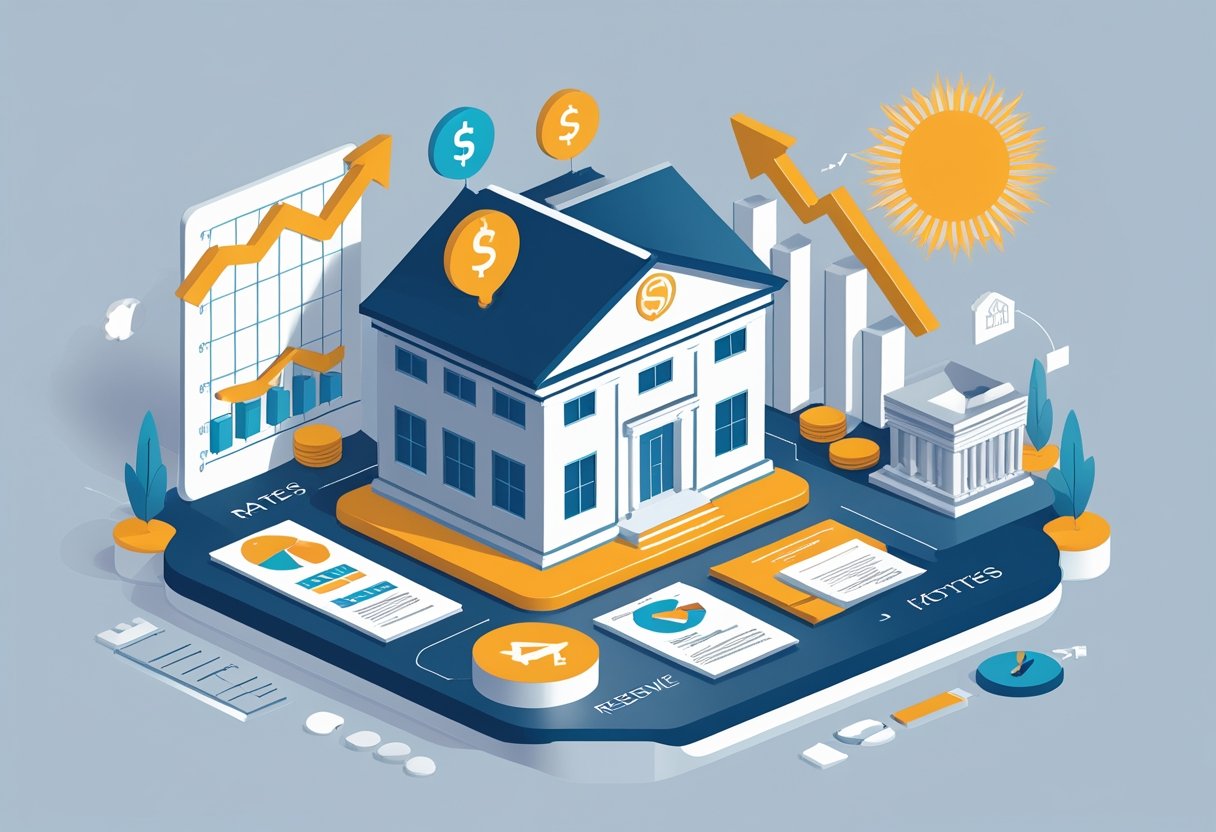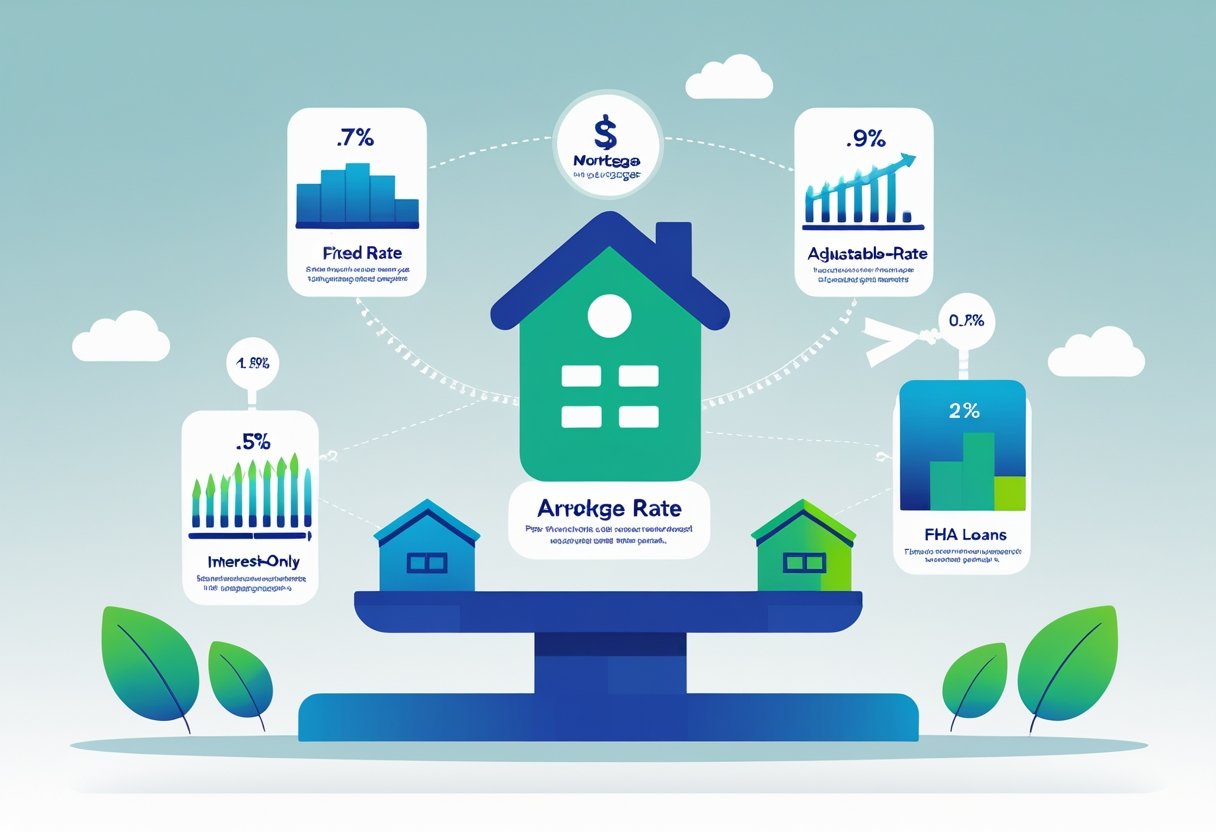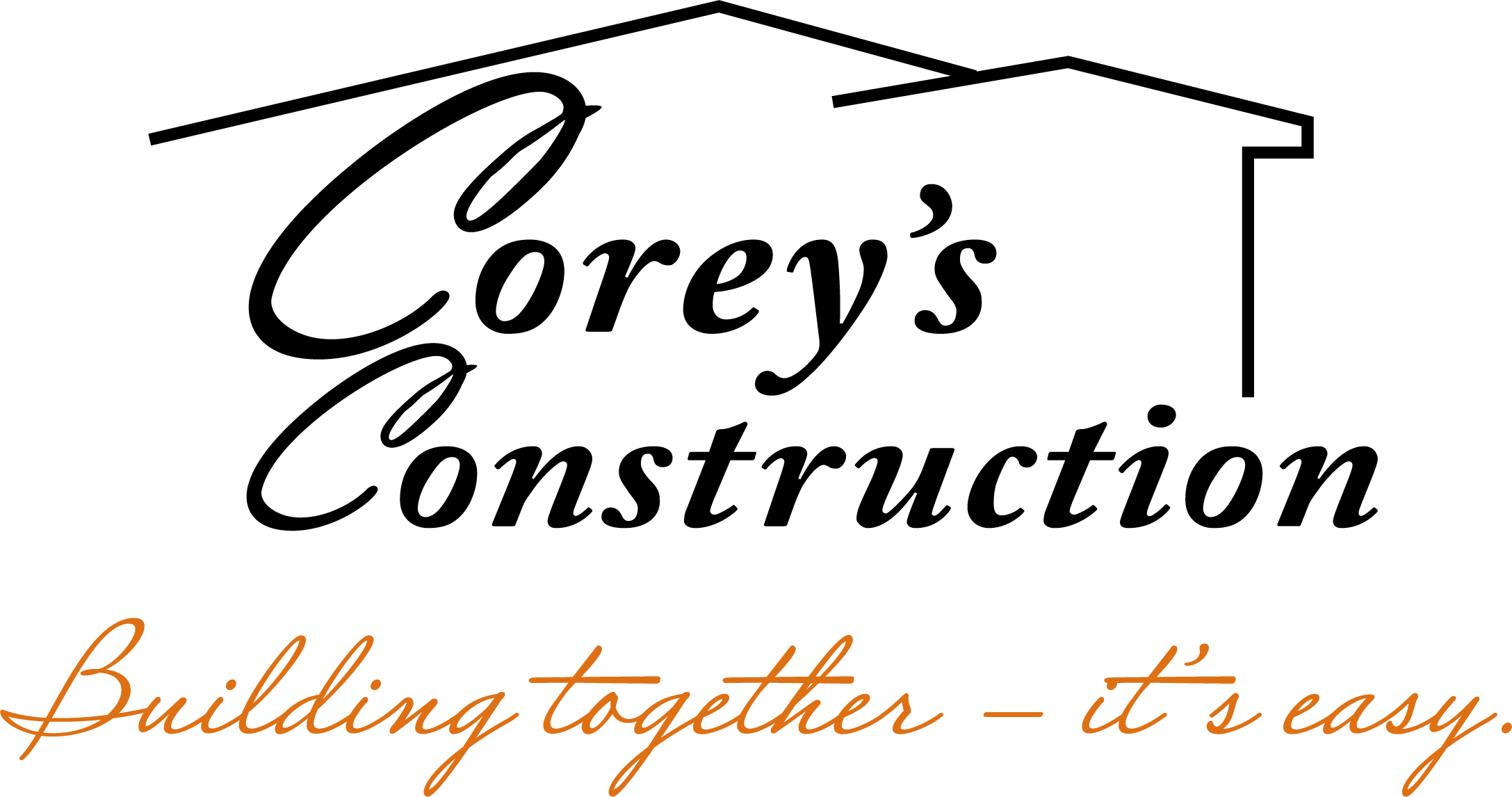When the Federal Reserve lowers interest rates, you might expect mortgage rates to drop too. But that’s not always what happens. Mortgage rates can still rise even when the Fed cuts rates, because they depend on broader market forces, investor expectations, and inflation trends.

You see this when lenders react to changing economic signals. If investors think inflation will stay high or the economy will rebound quickly, they may demand higher yields on mortgage-backed securities, which pushes mortgage rates up. As CBS News explains, rate drops from the Fed aren’t automatic, and the path can be unpredictable.
Understanding how mortgage rates move helps you make smarter financial choices. You’ll see why a Fed rate cut doesn’t guarantee cheaper borrowing and what factors truly shape the cost of your home loan.
Key Takeaways
- Mortgage rates don’t always fall when the Fed cuts interest rates.
- Inflation, investor expectations, and bond markets strongly influence mortgage rates.
- Knowing how these factors connect helps you plan better for home financing.
Why Mortgage Rates May Rise Despite Fed Rate Cuts
Mortgage rates can increase even when the Federal Reserve lowers its benchmark rate. Factors such as inflation, bond yields, and investor expectations often outweigh short-term policy changes. Understanding these relationships helps you see why rate cuts do not always translate into cheaper home loans.
The Disconnect Between Federal Funds Rate and Mortgage Rates
The federal funds rate applies to short-term lending between banks, while mortgage rates depend on long-term trends in the bond market. Mortgage lenders often price loans based on the yield of the 10-year Treasury bond, not directly on the Fed’s target rate.
When investors expect stronger economic growth or higher inflation, Treasury yields can rise. This pushes mortgage rates higher even after a Fed rate cut. For instance, after the Fed’s first cut in 2024, mortgage rates barely budged because long-term yields stayed elevated due to market uncertainty (CBS News).
Mortgage-backed securities (MBS) also play a key role. When MBS prices fall, yields rise, and lenders must charge higher rates to maintain returns. This market-driven pricing often creates a disconnect between the Fed’s policy moves and what borrowers actually pay.
Role of Inflation in Mortgage Rate Movements
Inflation directly affects interest rates and investor confidence. When inflation stays high, lenders demand higher returns to offset the loss of purchasing power. Even if the Fed lowers the federal funds rate, persistent inflation can keep mortgage rates in the 6–7% range, as seen in recent years (Charles Schwab).
High inflation also reduces demand for long-term bonds, which drives yields up. Since mortgage rates track these yields, they often rise alongside them.
If inflation expectations remain stubborn, the Fed’s easing cycle may have limited effect. You may still face elevated borrowing costs until price growth slows and investor confidence returns.
Market Expectations and Investor Sentiment
Market expectations often move faster than official policy. If investors believe the Fed will cut rates too aggressively, they may anticipate stronger future inflation. That outlook can push bond yields—and mortgage rates—higher.
In late 2024, expectations for future rate cuts led to a jump in mortgage rates despite easing policy (CNBC). This reaction showed how sentiment, not just policy, shapes borrowing costs.
Investor demand for mortgage-backed securities also matters. When confidence in the housing market weakens, MBS demand falls, forcing lenders to raise rates to attract buyers.
Your mortgage rate reflects forward-looking market behavior, not just today’s Fed decision. The balance between investor optimism, inflation fears, and bond yields determines how much you ultimately pay.
How Mortgage Rates Are Determined

Mortgage rates depend on how investors view long-term risk, inflation, and returns in the bond market. When yields on government bonds shift, or when demand for mortgage-backed securities changes, your 30-year mortgage rate can move even if the Federal Reserve’s benchmark rate stays the same.
Influence of Bond Yields and the 10-Year Treasury
You can often estimate where 30-year mortgage rates are heading by watching the 10-year Treasury yield. Lenders use this yield as a benchmark because both reflect long-term borrowing costs.
When investors expect higher inflation or stronger economic growth, they demand higher yields on Treasury bonds. This increase usually pushes mortgage rates up. If investors seek safety during economic uncertainty, Treasury yields drop and mortgage rates often follow.
The relationship isn’t exact, but it’s consistent. Historically, the average 30-year mortgage rate runs about 1.5 to 2 percentage points higher than the 10-year Treasury yield. As noted by Fannie Mae, recent rises in mortgage rates have largely come from increases in the 10-year Treasury note rate.
Mortgage-Backed Securities and Secondary Markets
Banks rarely keep your mortgage after closing. Instead, they sell it to investors as part of mortgage-backed securities (MBS). These securities trade in the secondary mortgage market, and their prices strongly influence the rates you pay.
When demand for MBS is high, their prices rise and yields fall, which helps lower mortgage rates. When investors pull back—perhaps due to inflation or higher Treasury yields—MBS yields climb, and lenders raise rates to stay competitive.
The Federal Reserve also plays a role by buying or selling these securities. According to Investopedia, Fed purchases of MBS can push rates down, while sales or reduced holdings can have the opposite effect.
Spread Between Treasury Yields and Mortgage Rates
The spread between Treasury yields and mortgage rates reflects the extra return investors demand for taking on mortgage risk. This includes prepayment risk, credit risk, and liquidity risk.
When markets are stable, the spread narrows, helping you secure lower mortgage rates. During volatile periods, that spread widens as investors seek more compensation for uncertainty.
As explained by CBS News, even when the Fed cuts its rate, mortgage rates may not fall much if investors expect higher inflation or weaker MBS demand. Understanding this spread helps you see why mortgage rates can rise even when short-term rates decline.
Factors Affecting Mortgage Rates Beyond Fed Actions

Mortgage rates depend on more than just the Federal Reserve’s benchmark interest rate decisions. They respond to broader economic conditions, government borrowing, and global financial trends that shape investor expectations and long-term yields.
Economic Growth and Labor Market Conditions
When the economy grows quickly, demand for credit increases. Strong economic growth often leads to higher wages and more consumer spending, which can raise inflation expectations. Lenders then charge higher mortgage rates to protect against the loss of purchasing power over time.
A tight labor market also matters. When unemployment is low and job openings are high, employers raise wages to attract workers. That can push prices higher, prompting investors to expect the Federal Open Market Committee (FOMC) to eventually raise rates again.
If growth slows or job gains weaken, inflation pressures may ease. In that case, long-term yields and mortgage rates often drift lower even if the Fed holds its benchmark rate steady. You can see this pattern discussed in U.S. News’ explanation of how the Federal Reserve impacts mortgages.
Impact of Government Debt and Fiscal Policy
Government borrowing plays a major role in shaping mortgage rates. When the federal government issues large amounts of Treasury bonds to finance spending, it increases the supply of debt securities. Investors may then demand higher yields, which can lift mortgage rates.
Fiscal policy also influences expectations. Expansive government programs or tax cuts can boost short-term growth, but they may also raise concerns about inflation and long-term debt levels. These expectations can drive up yields on long-term bonds, which mortgage rates often track closely.
You can read more about how fiscal policy and bond yields interact in this CBS News analysis of recent Fed rate cuts and mortgage trends.
Global Market Influences
Mortgage rates in the United States also move with global financial trends. When foreign investors seek safe assets, they often buy U.S. Treasuries, lowering yields and, in turn, mortgage rates.
However, rising interest rates abroad or geopolitical uncertainty can have the opposite effect. If investors expect stronger returns elsewhere, they may sell U.S. bonds, causing yields and mortgage rates to rise.
Global inflation trends, trade disruptions, and central bank policies in major economies all shape these movements. The Consumer Financial Protection Bureau’s data spotlight notes that international demand for U.S. debt directly affects domestic mortgage costs through changes in Treasury rates.
Types of Mortgages and Their Sensitivity to Rate Changes

Your mortgage type affects how quickly your loan responds to market shifts. Some loans keep your rate stable for years, while others adjust based on short-term benchmarks tied to the broader economy. Understanding these differences helps you plan for changing payments and manage long-term borrowing costs.
Fixed-Rate Mortgages vs Adjustable-Rate Mortgages
A fixed-rate mortgage locks in the same interest rate for the full loan term. Your monthly principal and interest stay constant, which offers predictability even when market rates rise. This stability can protect you from sudden increases in borrowing costs.
An adjustable-rate mortgage (ARM) starts with a fixed rate for a few years, then adjusts periodically. The rate changes based on an index, such as the Secured Overnight Financing Rate (SOFR) or another benchmark.
When market rates fall, your ARM payment may decrease after the next adjustment period. However, if rates rise, your payment can increase. According to Treadstone Mortgage, different loan types react differently to rate changes, and understanding this helps you choose between stability and flexibility.
| Loan Type | Initial Rate Period | Rate Adjustment | Best For |
|---|---|---|---|
| Fixed-Rate | Entire loan term | None | Long-term predictability |
| ARM | 3–10 years | Periodic | Short-term ownership or lower starting rate |
Role of the Secured Overnight Financing Rate (SOFR)
The Secured Overnight Financing Rate (SOFR) is a key benchmark for many ARMs. It reflects the cost of borrowing cash overnight using U.S. Treasury securities as collateral. When SOFR rises, lenders often adjust ARM rates upward at the next reset period.
SOFR replaced the London Interbank Offered Rate (LIBOR) as a more reliable, transaction-based index. Because it tracks real market activity, it can shift quickly with Federal Reserve actions or investor demand for Treasury securities.
If the Fed lowers its target rate, SOFR may also decline, but not always immediately. Other factors—like investor confidence and bond yields—can delay or reduce the impact on your mortgage rate.
APR and Borrowing Costs
Your annual percentage rate (APR) reflects the total cost of borrowing, including interest, lender fees, and points. It gives you a clearer picture of what you’ll pay over the life of your loan.
A lower interest rate doesn’t always mean a lower APR. Fees and closing costs can raise your effective borrowing cost. Comparing APRs helps you evaluate offers more accurately.
When rates fluctuate, your APR can change if you’re still in the application process. As explained by First Hope Bank, lenders adjust pricing based on market trends, borrower risk, and competition. Keeping track of the APR ensures you understand how rate changes affect your total loan expense.
Impact on Homebuyers and Homeowners

You may notice that lower federal interest rates do not always make home loans cheaper. Mortgage rates often respond to inflation, bond yields, and market expectations rather than the Fed’s actions alone. These factors can shape your ability to buy, refinance, or build equity in your home.
Effects on Home Affordability and Down Payments
When mortgage rates stay high even after Fed cuts, your home affordability can drop. A higher rate means a larger monthly payment for the same loan amount. For example, a 1% difference in rate can raise your payment by hundreds of dollars each month.
If home prices remain elevated, you might need a larger down payment to qualify for a loan. That can make saving for a home more challenging, especially for first-time buyers.
According to NPR, mortgage rates around 7% have made it harder for many buyers to afford homes, even though the Fed has lowered its benchmark rate. This disconnect shows how broader economic conditions can outweigh central bank policy.
You can manage affordability by comparing lenders, exploring different loan types, and adjusting your price range. Even a small rate difference can improve your budget flexibility.
Refinancing Opportunities and Limitations
As a homeowner, you may expect lower Fed rates to open refinancing opportunities. However, mortgage rates depend more on long-term Treasury yields than short-term Fed rates. When those yields rise, refinancing may not save you much.
You should evaluate your break-even point—the time it takes for monthly savings to cover closing costs. If you plan to move soon, refinancing might not be worth it.
U.S. News notes that Fed actions mainly affect short-term loans and adjustable-rate mortgages. If you have an ARM, your payments might adjust downward after a rate cut, but fixed-rate borrowers may see little change.
Keep track of your credit score and loan-to-value ratio. These factors often influence your ability to refinance more than monetary policy alone.
Implications for Home Prices
High mortgage rates can slow demand, but strong economic growth can keep home prices from falling sharply. Even as borrowing costs rise, limited housing supply and steady employment often support prices.
The Consumer Financial Protection Bureau found that low rates in 2021 made homes more affordable, fueling price increases. The opposite can happen when rates stay high—price growth may cool, but not necessarily reverse.
If you’re buying, slower price growth could help you negotiate better terms. If you’re selling, expect longer listing times and more selective buyers.
Monitoring both mortgage rates and local inventory levels can help you decide when to act. A balanced view of affordability, financing, and pricing trends will guide your next move in the housing market.
The Housing Market Response to Fed Rate Cuts
When the Federal Reserve lowers interest rates, the housing market often reacts in complex ways. You may see short-term shifts in buyer activity, lending standards, and home affordability, but these changes depend on inflation trends, investor sentiment, and how mortgage lenders price risk.
Trends in Housing Demand and Supply
Lower rates usually make borrowing cheaper, which can increase housing demand. You might notice more buyers entering the market after a Fed rate cut, hoping to secure better financing. However, as seen after recent cuts in 2024 and 2025, demand can outpace available homes, keeping prices elevated despite easing rates.
Builders sometimes respond by starting new projects, but supply growth often lags due to labor shortages and construction costs. This imbalance can limit affordability gains. According to CBS News, even after multiple rate cuts, mortgage rates stayed near 6% because market forces and inflation expectations offset the Fed’s actions.
If you’re a buyer, this means that while monthly payments might drop slightly, home prices may not. Sellers, on the other hand, could benefit from stronger demand but face competition from new listings once builders catch up.
Influence on Mortgage Lenders and Home Loans
Mortgage lenders adjust their rates based on Treasury yields and investor expectations, not just the Fed’s moves. When the Fed cuts rates, lenders may lower rates on home loans, but only if they expect inflation to remain stable.
In 2025, for instance, lenders hesitated to pass along full savings from Fed cuts because of uncertainty about future price growth, as noted by U.S. News. This cautious approach protects lenders from losses if bond yields rise again.
For borrowers, this means timing matters. You could see small declines in mortgage rates soon after cuts, but larger drops often take months. Keeping your credit strong and documentation ready helps you act quickly when lenders finally ease terms on new or refinanced loans.
Notable Experts and Data Sources
Understanding why mortgage rates can rise even when the Federal Reserve lowers its benchmark rate requires attention to both market experts and reliable housing data. You can gain better context by considering expert economic analysis and official mortgage rate tracking from established institutions.
Insights from Stephen Kates
Economist Stephen Kates, a housing market analyst at First American, offers data-driven insight into how market expectations shape mortgage rates. In his analysis on why mortgage rates increase when the Federal Reserve is cutting rates, Kates explains that strong employment data and revised economic forecasts can push up bond yields even during rate cuts.
You learn that mortgage rates often follow the 10-year Treasury yield, not the Fed’s short-term rate. When investors expect slower or smaller future cuts, yields rise, and mortgage rates climb. Kates emphasizes that this disconnect highlights how market sentiment and inflation expectations often outweigh the Fed’s immediate policy moves.
For clarity, Kates uses examples showing how a 25-basis-point rise in mortgage rates can reduce home-buying power by more than $10,000. This helps you see how small yield changes can have real effects on affordability.
Role of Freddie Mac in Mortgage Rate Reporting
Freddie Mac plays a central role in tracking and publishing U.S. mortgage rate data through its Primary Mortgage Market Survey (PMMS). The PMMS provides weekly averages for 30-year and 15-year fixed-rate loans, giving you a consistent benchmark to compare rate trends.
Freddie Mac gathers data from lenders nationwide, ensuring that its rate reports reflect broad market conditions. These reports help you identify whether recent rate movements align with Federal Reserve actions or stem from other factors like inflation, bond yields, or investor demand.
| Data Source | Frequency | Focus |
|---|---|---|
| Freddie Mac PMMS | Weekly | Average mortgage rates |
| Federal Reserve | Eight meetings per year | Short-term policy rate |
By using Freddie Mac’s reports alongside expert commentary, you can track how policy changes and market forces interact to influence real-world borrowing costs.
Frequently Asked Questions
When the Federal Reserve changes its benchmark rate, it can influence—but not directly control—mortgage rates. You may see shifts in borrowing costs, housing demand, and lending policies depending on how markets react to these decisions.
How do federal funds rate cuts impact mortgage interest rates?
When the Fed cuts the federal funds rate, banks can borrow money at lower costs. This often leads to reduced short-term lending rates. However, mortgage rates depend more on long-term factors like the 10-year Treasury yield, inflation expectations, and investor demand for bonds.
Can mortgage interest rates rise despite a reduction in the federal funds rate?
Yes. Mortgage rates can increase even when the Fed lowers rates. A rate cut can stimulate borrowing and spending, which may raise inflation expectations. According to Nasdaq, higher inflation can push Treasury yields up, leading to higher mortgage rates.
What is the relationship between the Fed’s interest rate decisions and current mortgage rates?
The Fed influences overall market conditions but does not set mortgage rates directly. Mortgage lenders base their decisions on bond market trends and credit risk. Forbes Advisor explains that shifts in the federal funds rate send signals to investors, shaping expectations that affect mortgage pricing.
How might a discount on mortgage rates from financial institutions like Schwab be affected by federal rate cuts?
Institutions such as Schwab may adjust their mortgage rate discounts depending on market conditions following a Fed cut. If Treasury yields rise due to inflation concerns, lenders may reduce or remove discounts to maintain profit margins.
Are mortgage rates at institutions like Fidelity and Morgan Stanley directly tied to changes in the Fed’s rates?
No. Mortgage rates at firms like Fidelity and Morgan Stanley follow broader market trends rather than the Fed’s short-term rate. These institutions consider bond yields, investor sentiment, and borrower credit profiles when setting rates.
What are the implications for the housing market when the Fed lowers interest rates?
Lower Fed rates can make borrowing cheaper and encourage more home purchases. As Guild Mortgage notes, reduced mortgage costs often increase housing demand. However, if inflation rises, affordability may decline as lenders raise rates to offset risk.






